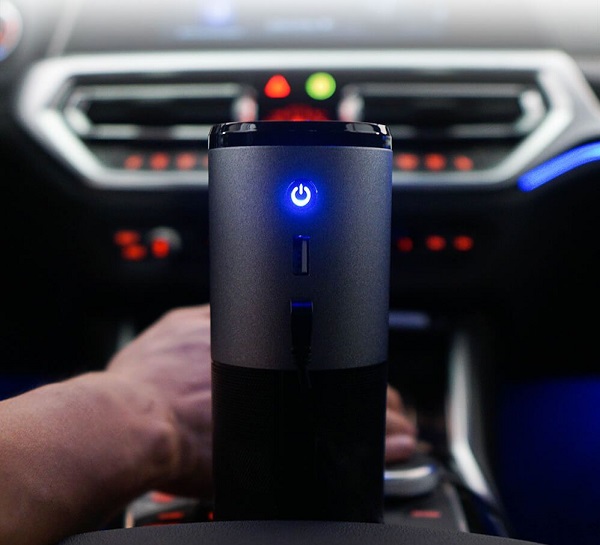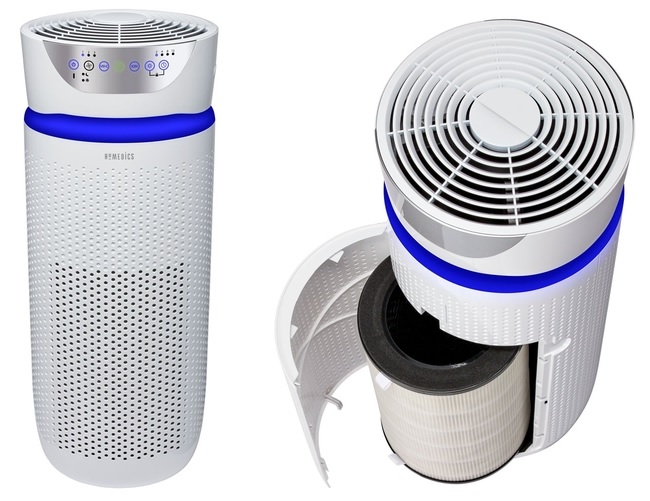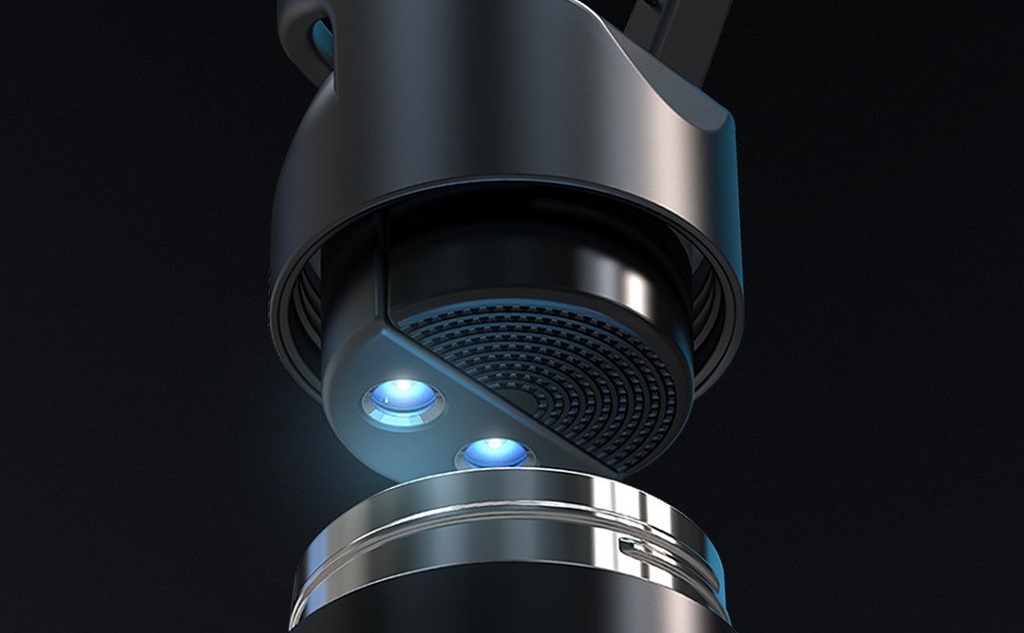UV-C light provides the most powerful germicidal wavelength of the entire ultra violet electromagnetic spectrum. Known for its disinfectant properties for air, water and non-porous surfaces, UV-C light is being applied to common household products to reduce the spread of bacteria, viruses and other microorganisms.
For decades, hospitals and other healthcare facilities have used germicidal UV-C light to sanitize critical spaces such as operating rooms, laboratories and clinics with effective results. This germicidal irradiation has been successful in combating infectious diseases such as Tuberculosis, Pneumonia, Anthrax and many of today’s modern influenza viruses.
Table of Contents
- How UV-C Light Works
- UV-C Light in Consumer Goods
- How UV-C Differs from UV-A and UV-B
- UV-C Sanitizing Products for the Home
- Limitations of UV-C in Consumer Products
- UV-C Resource Links
- Related Articles
How UV-C Light Works
UV-C light has been used in consumer goods products due to its strong photochemical reaction that inactivates disease causing microorganisms. Although UV-A and UV-B have microorganism killing properties as well, UV-C vibrates faster than UV-A and UV-B, which is important for altering chemical bonds of cells, thereby inactivating a larger range of bacteria and microbial contaminants.
The most effective germicidal wavelength occurs at a peak of 260-265 nm, where the UV photons have the highest energies and are very damaging to living microbes, bacteria and fungi, as they break their DNA bonds, effectively killing them.
Rock Space Video: How Does UV-C Light Kill Germs?
UV-C Light in Consumer Goods
Over the last few years we have seen a proliferation of consumer goods incorporating UV-C LED (light emitting diode) technology that promise to eliminate contaminants from either air, water or non-porous surfaces.
Consumers have been deluged with UV-C room sanitizers, automotive filters, food sanitizers and water decontamination systems, all promising to zap away fears about lethal substances in food, water or air.
Examples of UV-C Consumer Goods:
- Room Sanitizers
- Automotive Filters
- Food Sanitizers
- Water Decontamination Systems
How UV-C Differs from UV-A and UV-B
Ultraviolet light (“UV light”) is a type of electromagnetic radiation with shorter wavelengths than visible light. UV light covers the wavelength spectrum from 100 to 400 nanometers (nm) and is further classified by sub-wavelengths:
- UV-A (315 to 400 nm)
- UV-B (280 to 315 nm)
- UV-C (100 to 280 nm)
UV-C Sanitizing Products for the Home
We examined the science behind products that use UV-C light technology and chose five products that stand out from their competitors as being effective at sanitizing or purifying air, water or non-porous surfaces.
TRAE Goods Lighthouse Portable UV-C Air Purifier

UV-C LED technology combined with HEPA (“high efficiency particulate air”) filters is the most effective method of engaging UV-C for air purification, since air moves too rapidly through purifiers making UV alone minimally efficient. UV-C light requires significant contact with contaminants to inactivate them, as different contaminants need different durations of UV-C energy to be eradicated.
The TRAE Goods Lighthouse Portable UV-C Air Purifier combines medical grade HEPA H13 filters, activated carbon and UV-C light to kill viruses and microorganisms, while filtering out 99.95% of particulate matter, such as dust, allergens and pollutants.
During 2020, many consumers purchased the Lighthouse for travel back and forth in their automobiles to provide a sanitized environment, as they traveled alone or with others. The product has been especially popular in fire ravaged areas such as Oregon, Arizona and California, as the air quality for these states suffers considerably during Fire Season.
Waatr
CrazyCap UV-C Sanitizing Cap & Water Bottle

CrazyCap is the result of many years of magnetoelectric nanoparticle research and the knowledge that UV-C is and has always been a potent sterilizing agent to create potable water.
Using patented, innovative UV-C LED light ray technology, CrazyCap sterilizes water by killing up to 99.9999% of microbial organisms in two minutes by inactivating microbial DNA. With a simple double tap of the cap, you can have bacteria- and virus-free hydration and a sanitized water bottle with every swig, as the cap cleans the bottle every four hours for 20 seconds.
Although the product is sold as a unit, cap and bottle, the cap alone holds the technology and can be placed on any of a number of commercially available water bottles.
Waatr 4D Purification System
After the success of CrazyCap, Dr. Rakesh Guduru, founder and CEO, continued on his quest to bring clean drinking water to anyone who would rather fill up at the tap or wherever they can find clear water. His company’s next generation product, Waatr, addressed some of the issues that campers, hikers, travelers and others felt they wanted in a more robust portable water decontamination system.
Waatr is a 4D purification system that uses dual UV-C LEDs to break down viruses, bacteria and other pathogens first, then engages traditional filtration with a scientific twist.
Using time-dependent variables, water is filtered through a proprietary blend of coconut charcoal and ion exchange resin filter cartridges. The filtration process removes metals, chemicals, organic and particulate matter via an ion-exchange similar to water softening systems.
Waatr has added an extra twist, by offering filtration cartridges that add minerals to add a crisper taste, such as that found in artesian water or alkaline cartridges that result in supercharged ionized or alkaline water. With its higher pH level it is believed to neutralize the acids in the body, thereby preventing chronic diseases such as high blood pressure, diabetes and high cholesterol.
Waatr believes that the world can go beyond bottled water and go back to tap with purification. Their mission is to demonstrate that the world does not have to rely on plastic.
WAATR Video: World’s First 4D Purification System
Lexon OBLIO Wireless Charging Station & Sanitizer
OBLIO’s wireless charging station with a UV sanitizer disinfects your phone, perhaps the number one source of bacteria and other germs that most people carry. With a powerful antibacterial UV-C LED light, the charging station reduces up to 99.99% of bacteria in minutes, while simultaneously charging your 4.7″ and 6.6″ screen Qi wireless enabled smartphone. Full sanitization (per side) takes only 20 minutes, while full recharging takes up to 3 hours.
The product is compatible with Qi-enabled smartphones that are no larger than 3.26 inches wide and 0.4 inches think or 8.3 cm wide and 1.05 cm thick. In order to achieve complete 360° disinfection, it is necessary to flip your phone for a total disinfection time of 40 minutes (20 minutes per side).
The holding device was purposefully designed to hide the screen of the smartphone to decrease the likelihood of disrupting a disinfection cycle. Designed by Paris-based Italian designers, Andrea Quaglio and Manuela Simonelli, the “work of art” is also available for purchase at the MoMA Design store.
Lexon Video: Introducing Oblio, The Charging Station with Built-In UV Sanitizer
Rock Space – Portable Multi-function UV Light Sanitizer
Although the Rock Space UVC LED Sanitizer had originally been marketed for sanitizing and charging smartphones, customers have learned that its portability lends itself to other applications such as keys, power banks, chargers, ear pods, eyeglasses, and more.
The Rock Space is equipped with a built-in gravity angle sensor, which will automatically shut off the UVC LED if the angle is greater than 90 degrees. This protects users from irradiation damage, which can occur when the light comes into contact with eyes and skin for a prolonged period.
Rock Space Video: How to Use the Rock Space UV Sterilizer Sanitizer
HoMedics – TotalClean® Deluxe UV 5-in-1 Extra Large Room Air Purifier

With strong brand recognition that is synonymous with consumer home products, HoMedics is a leader in Air Purification. The company’s TotalClean Deluxe UV-C HEPA Air Purifier filtration tower is made specifically for large areas, as it cycles clean area up to 1,555 square feet every hour. The UV-C LED technology kills bacteria and other microbes, while the HEPA filtration removes up to 99.97% of airborne allergens and pollutants as small as 0.3 microns. Purification is enhanced with an ionizer which helps to eliminate viral particles that can remain suspended in the air for long periods of time. The carbon filter reduces odors and VOCs or volatile organic compounds emitted as gases.
Also See:
- UV CLEAN Portable Phone Sanitizer
- UV CLEAN Portable Sanitizer Wand
- HoMedics Sanitize Product Collection
Limitations of UV-C in Consumer Products
Although the science behind UV-C’s germicidal properties is well researched and documented, it is important to note that there are limitations to applications of the technology, as applied to consumer products, in order to achieve sanitizing or purifying effects. These limitations include:
- UV-C Concentration of Energy is Limited
- UV-C Germicidal Effects Work Best in Closed Systems
- UV-C Light Needs Transparent Fluids to be Effective
- UV-C Light Does Not Harm Particles or Particulates
- UV-C Light Can Damage Eyes & Skin with Increased Exposure
UV-C Concentration of Energy is Limited
The energy density or amount of energy stored in a system per unit of volume, is extremely important for damage to occur to any pathogen. The higher the energy density for a system (UV-C light), the more energy it can store and release. Using UV-C LEDs or light emitting diodes, helps to “tune” the wavelength emissions to improve energy density, keeping it optimized for a certain amount of time. The concentration of energy on passing air or length of exposure to UV-C light is limited and not very effective, Bacteria and viruses in air need extended periods of UV-C light exposure to become inactivated.
UV-C Germicidal Effects Work Best in Closed Systems
Germicidal effects work best in closed systems, such as contained areas or a vessels of some type, where UV-C high energy density can be optimized for a certain duration.
UV-C Light Needs Transparent Fluids to be Effective
To be effective as a sanitizer in liquids, UV-C needs transparent fluids. UV-C light must be able to pass through the medium in order to be a potent germicide.
UV-C Light Does Not Harm Particles or Particulates
UV-C light does not harm particles or particulates, such as allergens, toxins or ultrafine particles, all of which require a filtration mechanism, in order to capture all pollutants. Similarly, UV-C cannot capture bacteria and viruses from the air – they merely inactivate them IF they pass under the UV-C beam. A partially inactivated pathogen can “wake up” to regenerate and become airborne once again.
UV-C Light Can Damage Eyes & Skin with Increased Exposure
UV-C light is the most dangerous of the UV sub-spectrums. The same high energy that helps to destroy bacteria and viruses can equally damage eyes and skin with increased exposure using the same DNA destruction principles.
UV-C Resources
- The Science Behind UV-C Energy: What Is It?
- Are UV air purifiers worth it?
- US FDA: UV Lights and Lamps: Ultraviolet-C Radiation, Disinfection, and Coronavirus
Related Articles
- Products to Turn Your Bathroom Into a Health & Wellness Spa
- Need Help Falling Asleep? Give These Sleep Tech Products a Try!
- Best of KBIS 2021: Innovative Products for Kitchen & Bath
| Purgula is reader-supported. When you click on links to other sites from our website, we may earn affiliate commissions, at no cost to you. If you find our content to be helpful, this is an easy way for you to support our mission. Thanks! Learn more. |







